Using hard water can prove disastrous for your water pipes and appliances. It is therefore important to invest in a good water softener to solve this problem. But what are the qualities of the best water softener?
A great water softener should be big enough to handle your household needs. The controls should be easy to operate, and the equipment should be able to perform an efficient cation exchange to remove the hard minerals in the water.
- Fleck Structural 5600SXT Water Softener
- Fleck Iron Pro 48,000 Water Softener
- Aquasana EQ-SS20 SimplySoft Water Softener
- On The Go OTG4-DBLSOFT Water Softener
- On The Go OTG4-StdSoft Water Softener
- Watts Water Technologies RV PRO-1000 OR M7002 Water Softener
- ABCWaters 16,000-grain Capacity Portable Water Softener
- Aquios FS-220 Water Softener
- WaterBoss 220 Water Softener
- Pentair Fleck 9100 SXT Water Softener
Water Softener Reviews
Fleck Structural 5600SXT Water Softener
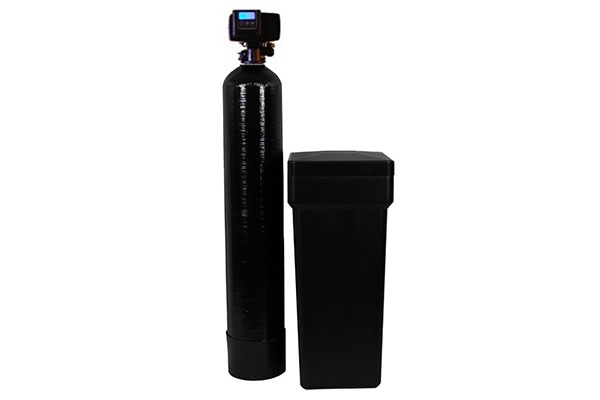
Fleck 5600SXT boasts of a 48,000-grain capacity and 12 GPM water flow rate. It utilizes the standard ion exchange process in softening water, features a backlit LCD display and electronic controller, and is digital-metered.
>>>> Click Here To See Customer Reviews & Current Price <<<<
Fleck Iron Pro 48,000 Water Softener
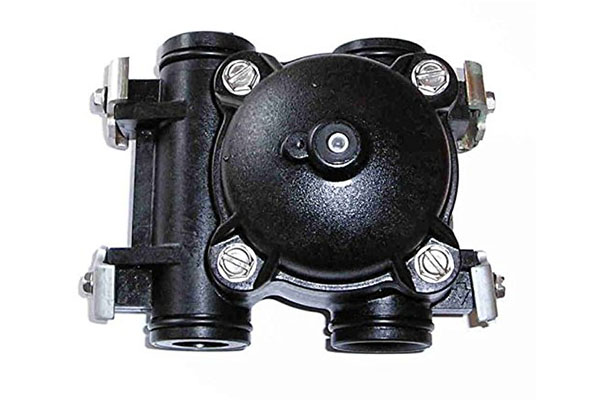
Fleck Iron Pro 48k performs two main functions – as a water softener and iron filter. It helps remove iron and treat hard water. It has a 48,000-grain capacity, works well for homes with two to three baths, and features fine mesh resin, digital control head and bypass valve.
>>>> Click Here To See Customer Reviews & Current Price <<<<
Aquasana EQ-SS20 SimplySoft Water Softener
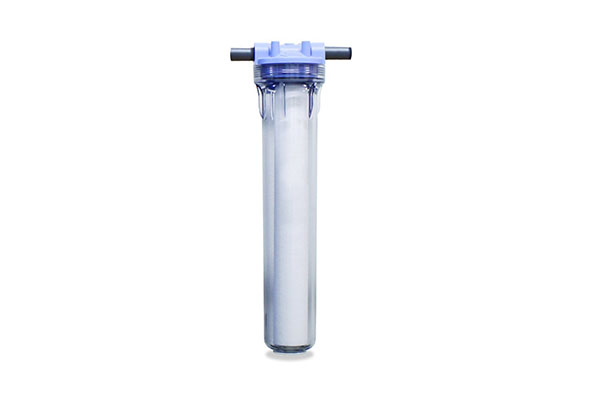
Aquasana EQ-SS20 is a one-tank water softener, which lessens calcium and magnesium in water. It uses the SLOW PHOS water softening technology certified by NSF. It has a 50,000-gallon grain capacity, lightweight and small design, and durable construction.
>>>> Click Here To See Customer Reviews & Current Price <<<<
On The Go OTG4-DBLSOFT Water Softener
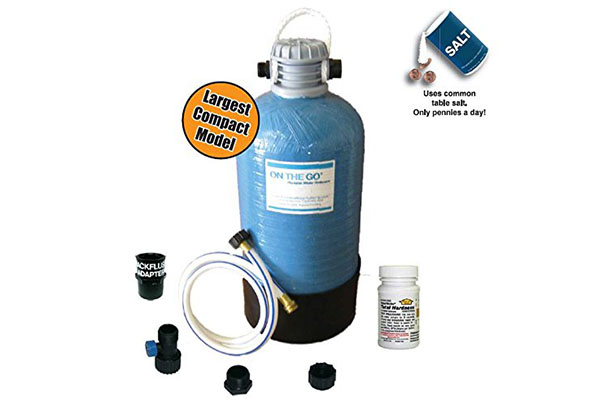
On The Go OTG4-DBLSOFT is considered as the biggest RV water softener with its 16,000-grain capacity. It showcases a compact design, allowing you to install it in tight places. It also has high flow rates, and features a large mouth opening, 360-degree swivel, and premium resin.
>>>> Click Here To See Customer Reviews & Current Price <<<<
On The Go OTG4-StdSoft Water Softener
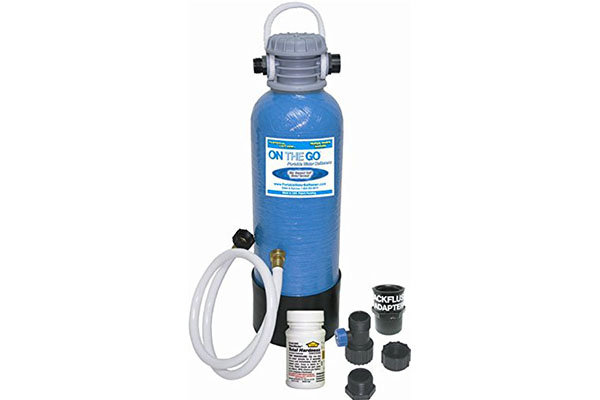
The OTG4-StdSoft water softener from On the Go is ideal for RV and marine model owners. It has an 8,000-grain capacity. It features an inlet shut-off, high-flow control valve, 360-dgree swivel, back flush adapter, and full cradle base designed to provide a more stable and secure fit.
>>>> Click Here To See Customer Reviews & Current Price <<<<
Watts Water Technologies RV PRO-1000 OR M7002 Water Softener
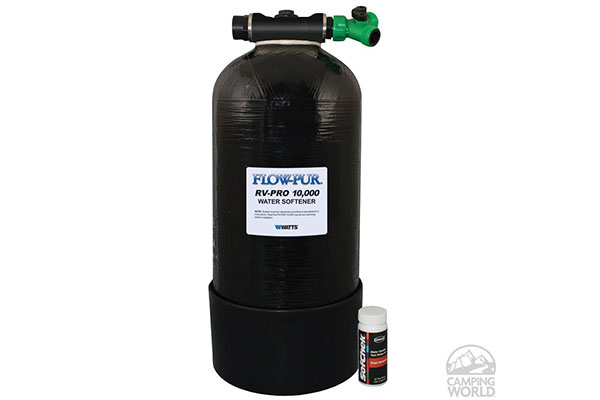
RV Pro-1000 can deliver an impressive output – around 4-gallons per minute – making it work for households that greatly need soft and clean water. It has a custom-designed flow valve, full cradle base for improved stability, high capacity resin and drain line VORTEX flow restrictor.
>>>> Click Here To See Customer Reviews & Current Price <<<<
ABCWaters 16,000-grain Capacity Portable Water Softener

This water softener works well for boats, cars and RVs. It eliminates hard water and is easy to regenerate. It has a 16,000-grain capacity and can produce up to 2,000 gallons of softened water. It is also portable, so it is ideal for outdoor activities requiring softened water.
>>>> Click Here To See Customer Reviews & Current Price <<<<
Aquios FS-220 Water Softener
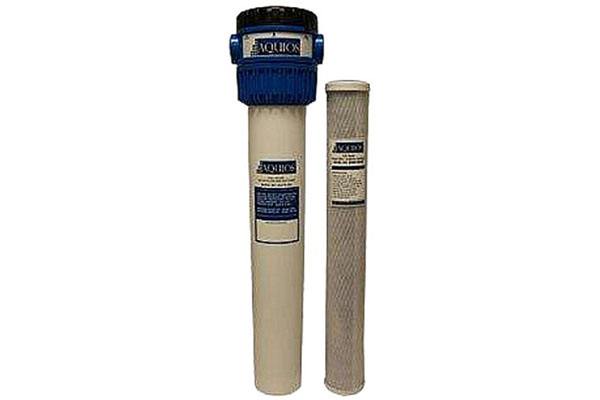
Aquios FS-220 softens water using a salt-less system. A natural, commercial technology is used instead to prevent minerals from accumulating in your appliances and pipes. It also performs two main actions – filter and soften hard water simultaneously.
>>>> Click Here To See Customer Reviews & Current Price <<<<
WaterBoss 220 Water Softener

This water softener from WaterBoss has a 22,000 grain removal capacity, ideal for families composed of up to 4 people. It features a patented compact design, which supports water regeneration within just 18 minutes. It can filter sediment and dirt, and remove iron in water.
>>>> Click Here To See Customer Reviews & Current Price <<<<
Pentair Fleck 9100 SXT Water Softener
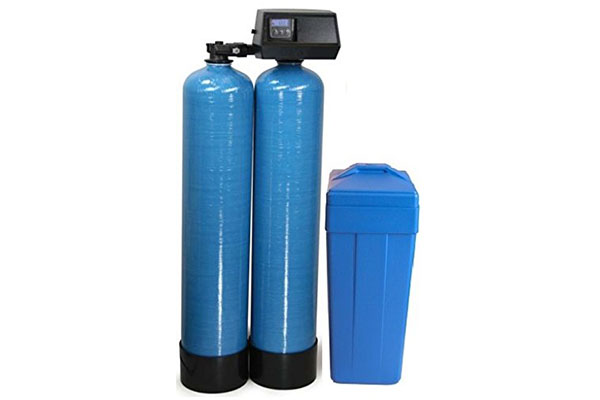
Pentair Fleck 9100 SXT is a water softener with a twin tank – each one boasting of a 64,000-grain capacity. It has a unique internal capacitor feature, and non-volatile memory standard. Customizing cycle settings is also possible in this metered water softener.
>>> Click Here To See Customer Reviews & Current Price <<<<
Types Of Water Softeners
Hard water isn’t generally hazardous to human health. The only reason why it is categorized as such is because it carries high amounts of minerals picked up from underground.
The only way to soften hard water is to lessen these dissolved solids. There are several ways on how to do it, and they are embodied in the following types of water softeners.
Salt-Based Ion Exchange Water Softener: This is the most widely used water softener. The reason why it’s called “salt-based” is because it exchanges some of the water’s hard minerals with sodium.
Dual-Tank Water Softener: Regular tanks disconnect from water pipes every night to recharge. These downtimes, however, are avoided with dual tank water softeners. When one tank recharges, the other takes over.
Salt-Free Water Softener: Instead of substituting minerals with sodium, this water softener uses potassium-chloride salt. It’s not as effective as salt-based ones, but perfect for people regulating their salt intake.
Descaler or Magnetic Water Softener: This water softener is a simple unit clipped to the pipes of incoming water. It does its job by changing the magnetic field of the pipe, and thus repelling calcium-carbonate minerals.
How To Select a Water Softener
Measure the Demands of your Household: Water softeners come in varied capacities. And as implied earlier, not all types can give a continuous supply of soft water.
The important things to know are the total gallon per day consumption of the household, and the peak hours of water usage. After all, you don’t want to run out of soft water while your tank is recharging.
Get Acquainted with Water Softener Controls: In connection with the previous point, tanks come with two types of cycle controls; timer and DIR (demand-initiated regeneration).
The former accords with your water usage, and recharges the unit at preset days and times. Know, however, that this type can only provide a limited supply of softened water.
DIR-controlled water softeners, on the other hand, recharges only when resin levels are low. Because it shuts down only when it needs to, it can accommodate large water usage.
Know Your Water’s PPM (Parts Per Million): And also, know how much of it you want removed. Water softeners, after all, remove grains of hardness in varied levels.
How To Maintain Your Water Softener
Always check salt levels: Of course, this is only applicable to salt-based and timer-controlled water softeners. The rule here is, if the tank is under half-full, it’s time to add salt.
Add the Right Salt: Salt for water softeners comes in three forms; granular, block, and tablet. Although most tanks use tablets, you need to specifically know which ones to use.
Salt Bridges: It’s not just the salt levels you should be looking out for in every inspection. There are what’s called salt bridges — solid layers of salt that prevents resin beads from regenerating.
Like how you break clumps of sugar with a spoon, break the bridge apart with a broom handle. Make sure, however, to be thorough because they build faster when small clumps remain.
Keep the Brine Tank Clean: Depending on your usage, cleanings should be scheduled every 6 to 12 months. And while the tank is drained and emptied, take advantage and inspect the unit for any problem.
How Water Softeners Work
As explained earlier, common water softeners use ion exchange to reduce the amount of calcium and magnesium. Despite the simplicity of the concept, water would need to go through several processes to achieve a successful exchange.
Understand that regular tap water passes through the mineral tank, and not the brine tank. The mineral tank is filled with polystyrene beads, commonly referred to as zeolite or resin.
Calcium and magnesium are positively charged, while the beads are negatively charged. Since negatives attract positives, the calcium and magnesium particles will attach to the beads.
Although not as strong, sodium is also positively charged. And they will move in and replace the calcium and magnesium removed from the water.
The beads will eventually get saturated with minerals, and this will call for a recharge. This means that concentrated sodium-rich solutions, also called brine solution, from the brine tank would be carried to the mineral tank.
This process will wash the calcium and magnesium particles from the beads. Sodium will once again retake their places against the beads, and the solution that now carries the dirt shall be flushed out of the water softener.